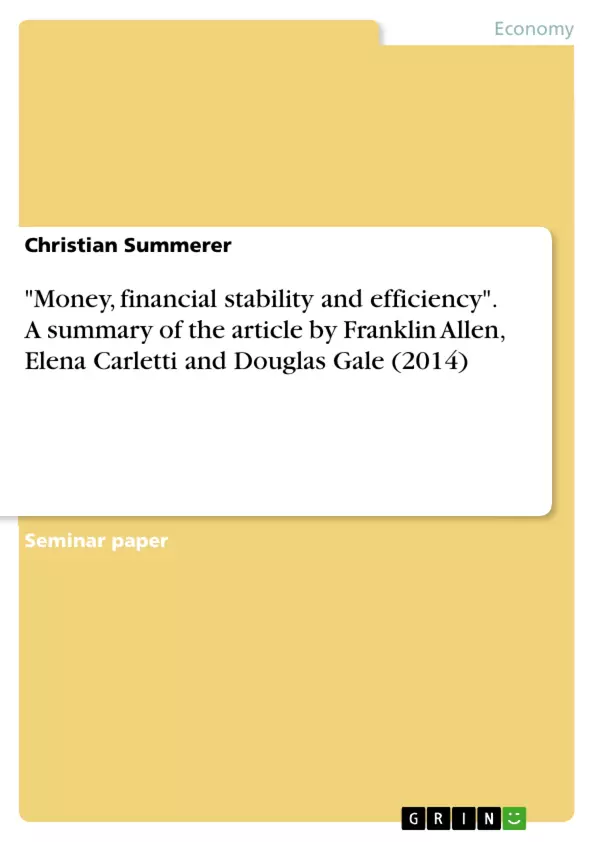At least since the start of the last financial crisis in 2007, the analysis of financial stability is a broadly investigated field of research. Macroeconomic as well as microeconomic models try to evaluate the effects of distortions (liquidity shocks, substantial losses on equity good markets. . . ) on the financial markets to the stability of all or some areas of the economy.
Macroeconomic models mainly evaluate the impacts of such disruptions to benchmarks like GDP, unemployment or international trade and give recommendations regarding how institutions (central banks, governments. . . ) should react. As Blaug indicates, classical, neoclassical and new-classical models can be distinguished in this context. In contrary, microeconomic models are trying to quantify the welfare effects of such events on the level of individual economic participants like households, firms or banks. Most of this literature measure such losses via real-term variables, for example real wages or real consumption. Within such models, this causes instability on the banking/financial sector due to crashes in equity or bank-runs.
Just a small group of younger literature, such as Carletti et al. (2009) or Gersbach (2012), examines the question whether modeling nominal but non-contingent contracts instead of real ones improve financial stability in theory. Among this literature, the present article “Money, financial stability and efficiency”, written by Franklin et al. (2014), can be found. The authors consider a standard banking model with aggregate return risk, aggregate liquidity risk and idiosyncratic liquidity shocks.
The aim of this term paper is to briefly describe relevant model specifications and main assumptions of the underlying model. Secondly, main findings and their implications regarding the proposed research question will be presented. Finally, this term paper will complete with some critical reflections about the applicability of the model in theoretic and empirical research.
Inhaltsverzeichnis (Table of Contents)
- Introduction
- Model specifications and assumptions
- Main findings and their implications
- Banks
- Firms
- Consumers
- Market clearing and equilibrium
- Conclusions and critical reflections
- Appendix
- References
Zielsetzung und Themenschwerpunkte (Objectives and Key Themes)
This article explores the relationship between money, financial stability, and efficiency within a standard banking model. It analyzes the effects of aggregate return risk, aggregate liquidity risk, and idiosyncratic liquidity shocks on the financial system, considering both theoretical and practical implications.
- The role of money in financial stability and efficiency
- The impact of liquidity shocks on the banking sector
- The effects of aggregate return risk on financial stability
- The implications of the model for policymaking
Zusammenfassung der Kapitel (Chapter Summaries)
The article begins by outlining the model specifications and assumptions, drawing upon previous research by Carletti et al. (2009). The model includes a central bank that issues fiat money, a banking sector that collects deposits and provides loans, and a productive sector that uses loans to purchase initial endowments and produce consumption goods.
The article then explores the main findings and their implications for various economic actors, including banks, firms, and consumers. It analyzes the dynamics of the economic cycle, considering the flow of funds between these actors and the role of liquidity shocks in influencing financial stability.
Schlüsselwörter (Keywords)
The article focuses on the relationship between money, financial stability, and efficiency within a standard banking model. Key concepts explored include aggregate return risk, aggregate liquidity risk, idiosyncratic liquidity shocks, central bank intervention, and the role of banks in facilitating economic activity.
- Arbeit zitieren
- Christian Summerer (Autor:in), 2016, "Money, financial stability and efficiency". A summary of the article by Franklin Allen, Elena Carletti and Douglas Gale (2014), München, GRIN Verlag, https://www.grin.com/document/458855



